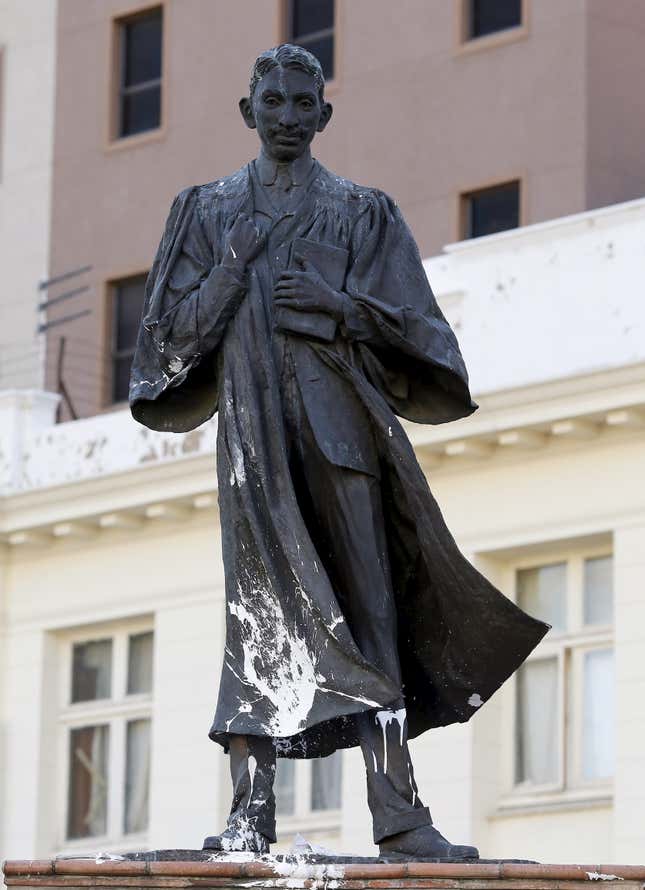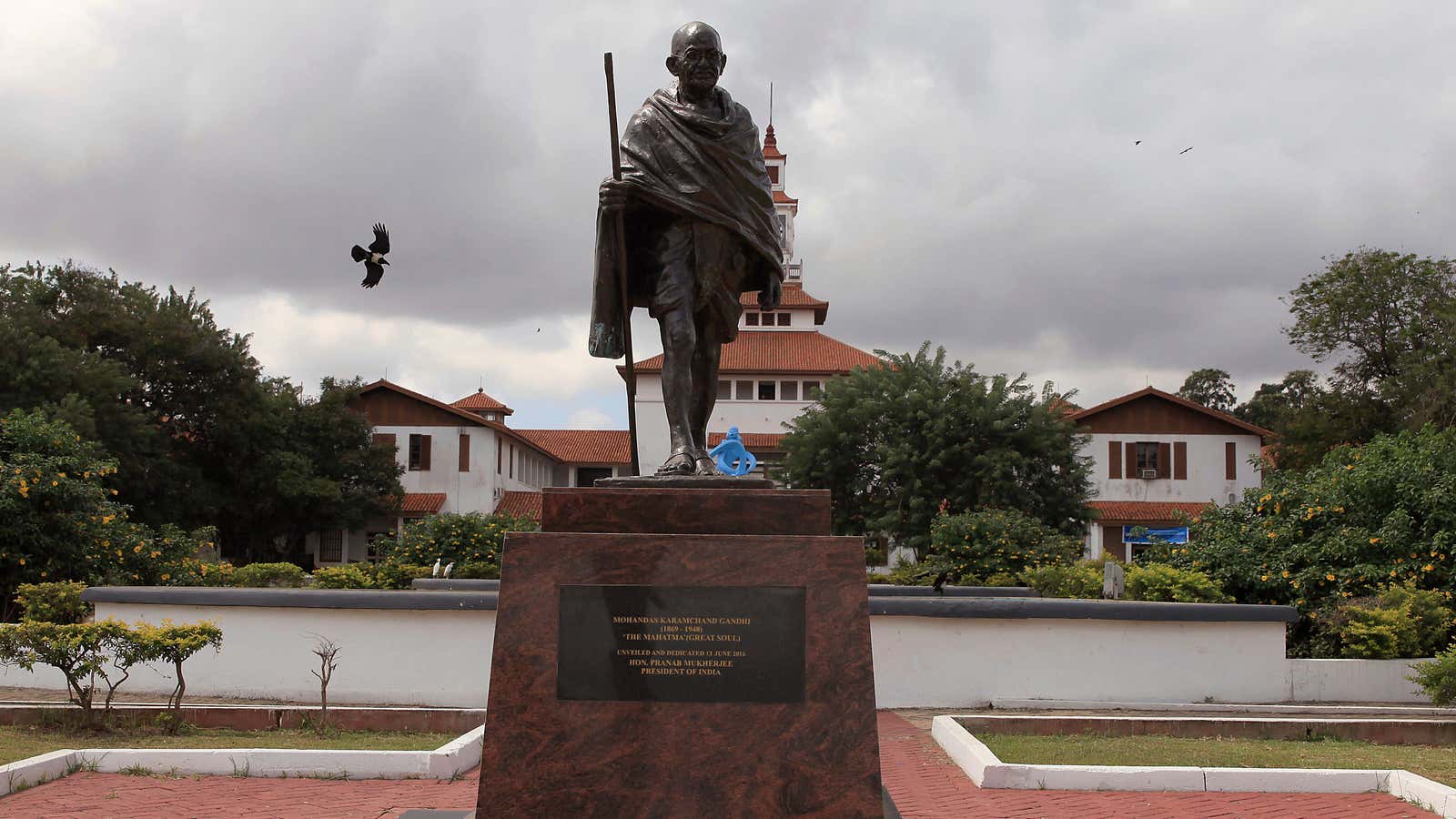Canadian journalist and author Malcolm Gladwell in his podcast Revisionist History once said statues are a representation of something that we have chosen to take seriously, to memorize in a permanent form. With a statue you are saying to the future, “This is what I want you to remember about my generation.”
Perhaps in keeping with this, the Indian government and the Indian community in Malawi—with the approval of the Malawi government—are currently erecting a Mahatma Gandhi statue which they state is a way of paying homage to the efforts of activism Gandhi offered.
However, despite both the Indian and Malawian government’s support to have the statue put right at the heart of Blantyre, which is the southern African country’s second oldest city, not everyone is pleased with the idea of having a statue of this Indian icon of peace.
A group of over 3,000 young activists in the country have signed an online petition calling for the Malawian and Indian governments to halt the construction of the statue. The group, operating under the banner “Gandhi Must Fall Movement” (#GandhiMustFall), argues Gandhi has no direct connection to Malawians as he is not known to a majority of the locals.
The group claims Gandhi, who is revered at home for his role in India’s independence, was a racist.
“He (Gandhi) did not like the idea that Africans and Indians were given the same entrance at work. He actually fought for Indians to have their separate entrance away from Africans,” says the group.
Racist record
Gandhi’s legacy and track record on race relations has taken a beating over the last few years, particularly in Africa, even as the Indian government under Narendra Modi seems keen to champion his well-established reputation as an influential pioneer of peaceful protest and activism around the world.

In a recent book by Ashwin Desai and Goolam Vahed, professors at the University of Johannesburg and the University of Kwazulu Natal, reveal that Gandhi was an ardent racist who thought Africans were “Kaffirs”. Kaffir is a racial slur which was used to denigrate Africans during the colonial times.
When Gandhi was in South Africa, in the early 1900s, he repudiated the colonialist structure that placed Indians and black Africans in the same class bracket apart from Europeans.
One of the local young activists against the erection of the Gandhi statue in Blantyre, Mkotama Willie Katenga Kaunda says he found it appalling the Malawi government disregards literature which paints Gandhi as a racist.
“It is infuriating that the very same people they need for taxes are being betrayed for silver handed to them by a foreign government,” says Kaunda. “It is through this realization that Malawians are going to be insulted by the statue of Gandhi,so we thought to take action.”
The Malawi government released a statement insisting it is important to understand the construction of the Gandhi statue is aimed at recognizing the outstanding role that Mahatma Gandhi played in Malawi and India. Today, Malawi has a small Indian community of around 8,000 in a country of 18 million people. Many in the community have stakes in the country’s commercial industries, such as retail and distribution and some have lived in the country since their ancestors came with the British to help build the country’s early railways in the late 19th century.
This is not the first time that a Gandhi statue has sparked controversy on an African soil, just two years ago, a new Gandhi statue was protested on a Ghana university campus with similar sentiments that Gandhi was a racist. Back in April 2015, a Gandhi statue in Johannesburg’s Mahatma Gandhi Square was defaced with white paint. In South Africa, where as a young lawyer he started his early nonviolent civil disobedience work (1893-1914), Gandhi’s statue was caught up in a wider movement against colonialist iconography such as Cecil Rhodes.
Sign up to the Quartz Africa Weekly Brief here for news and analysis on African business, tech and innovation in your inbox
